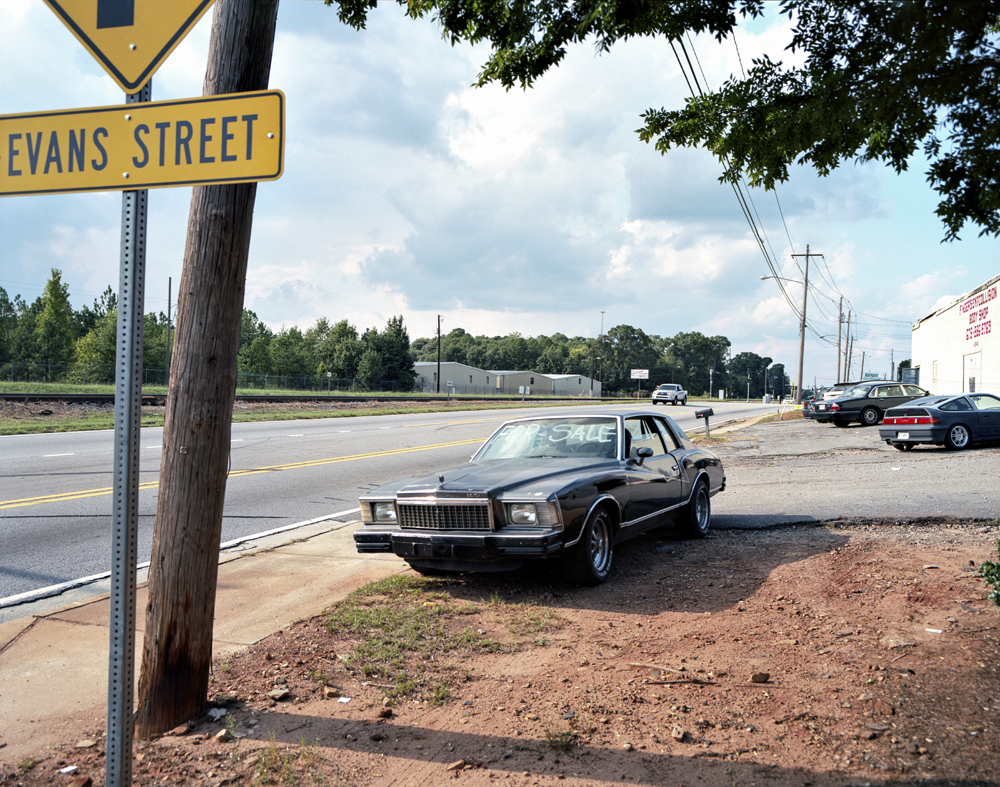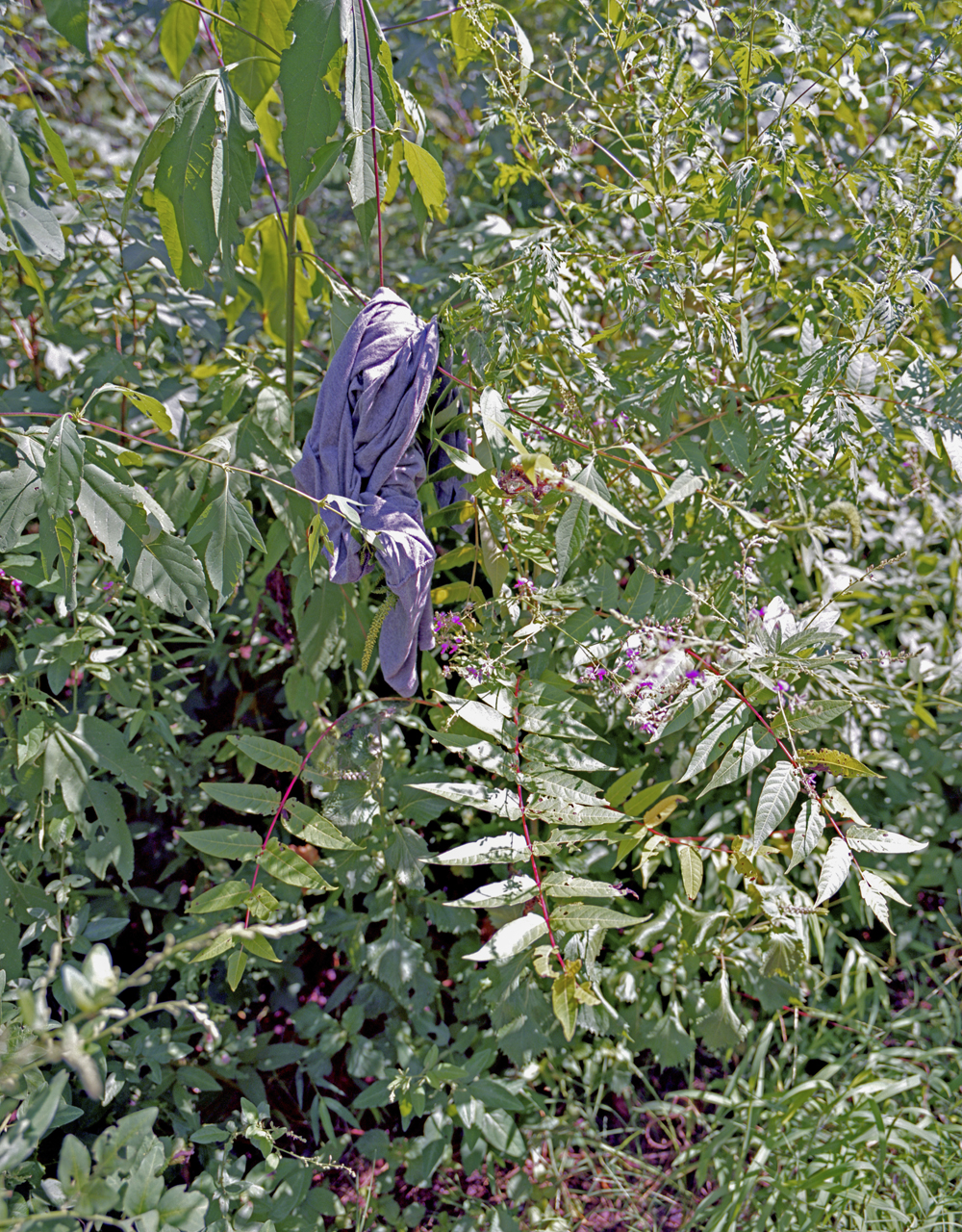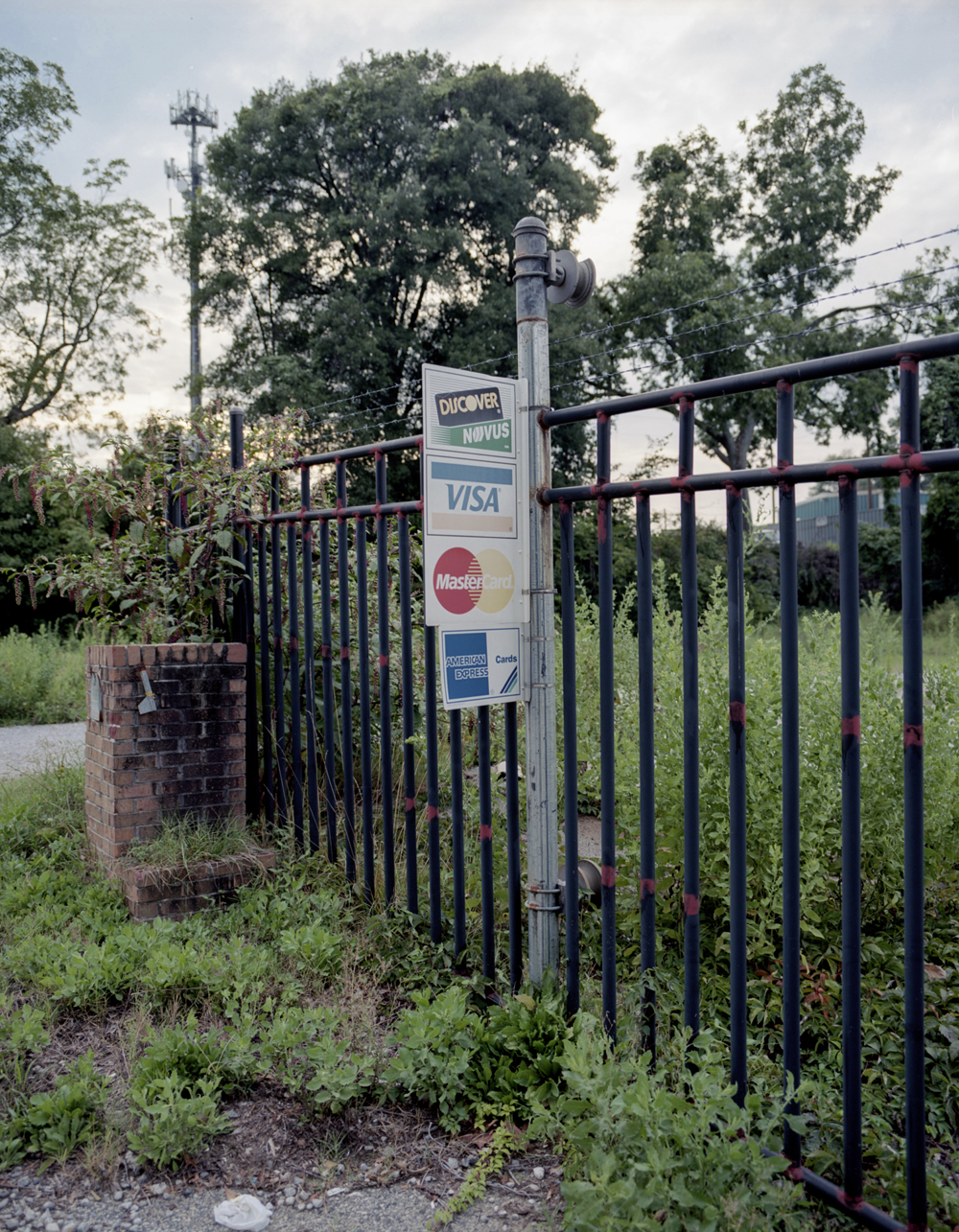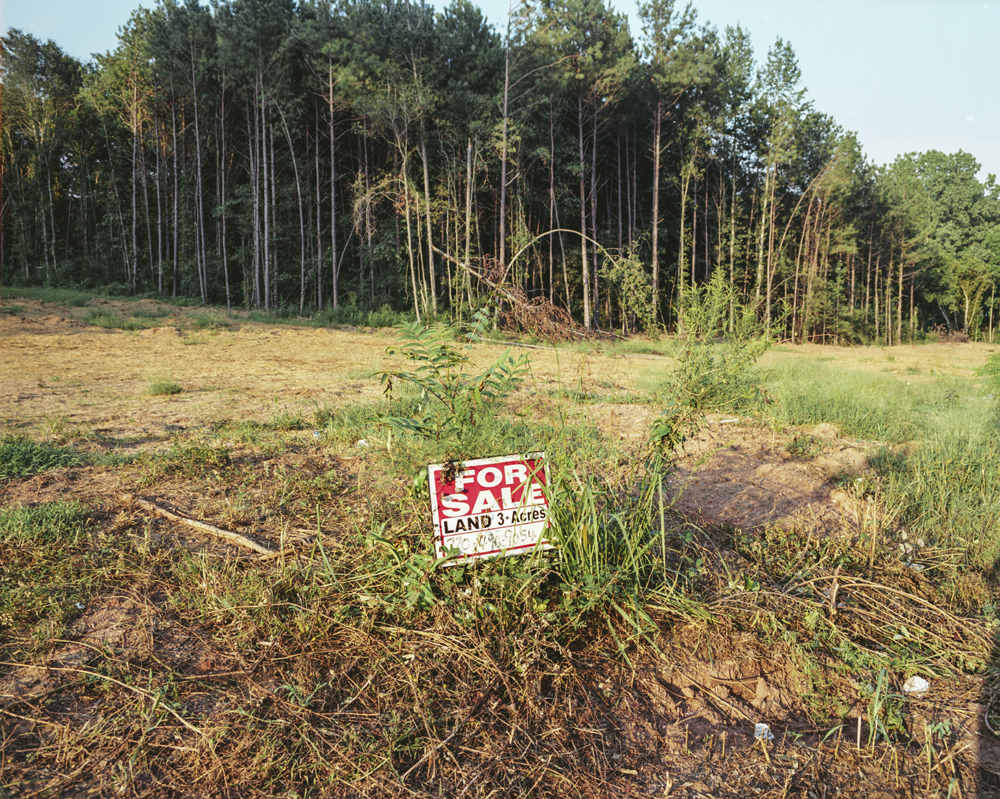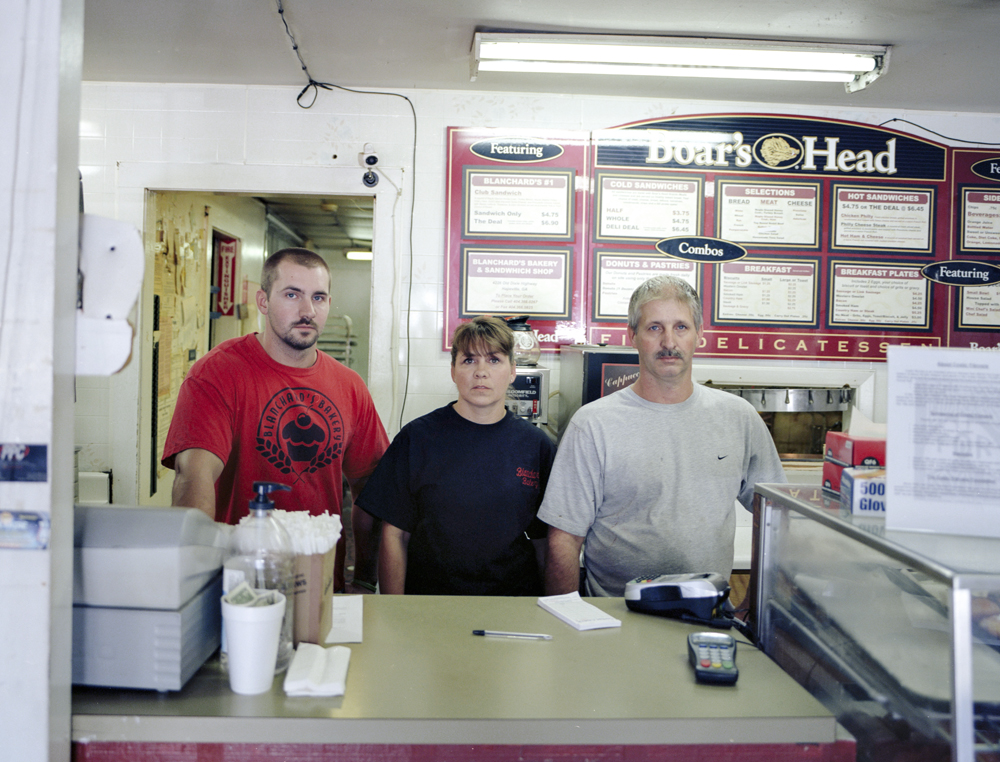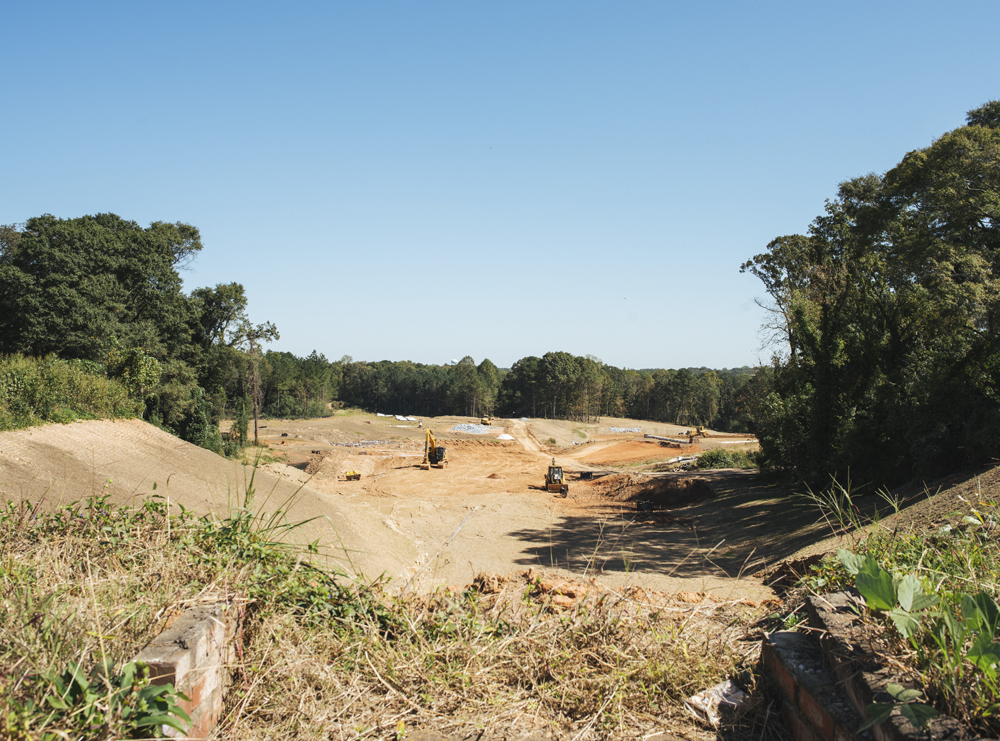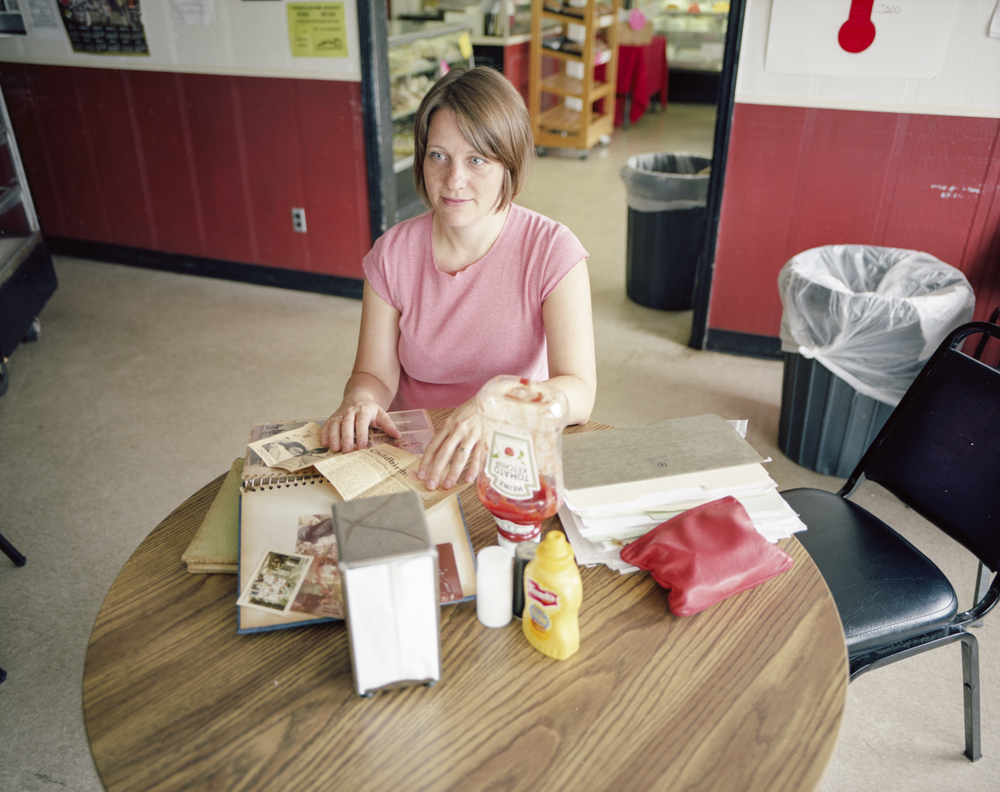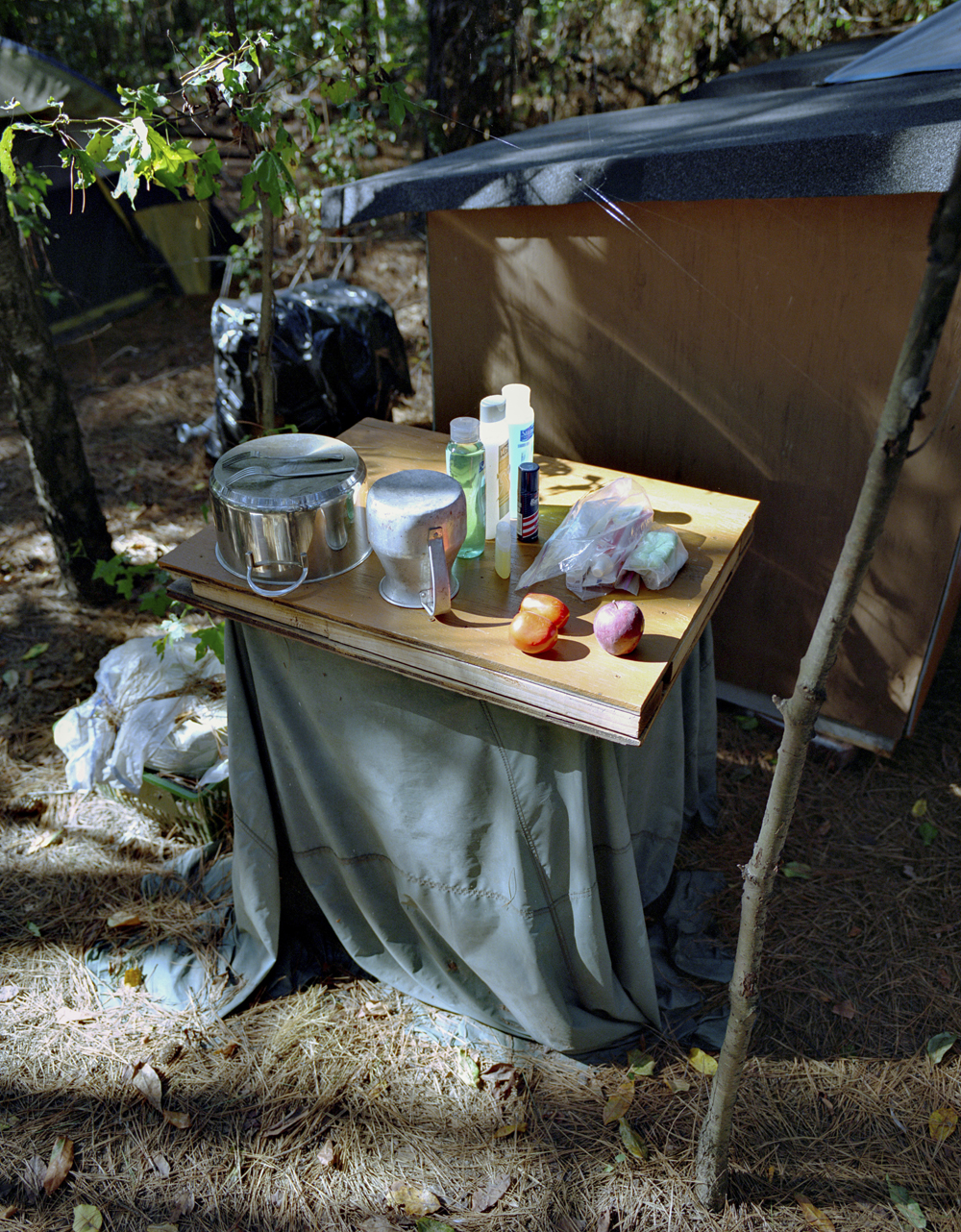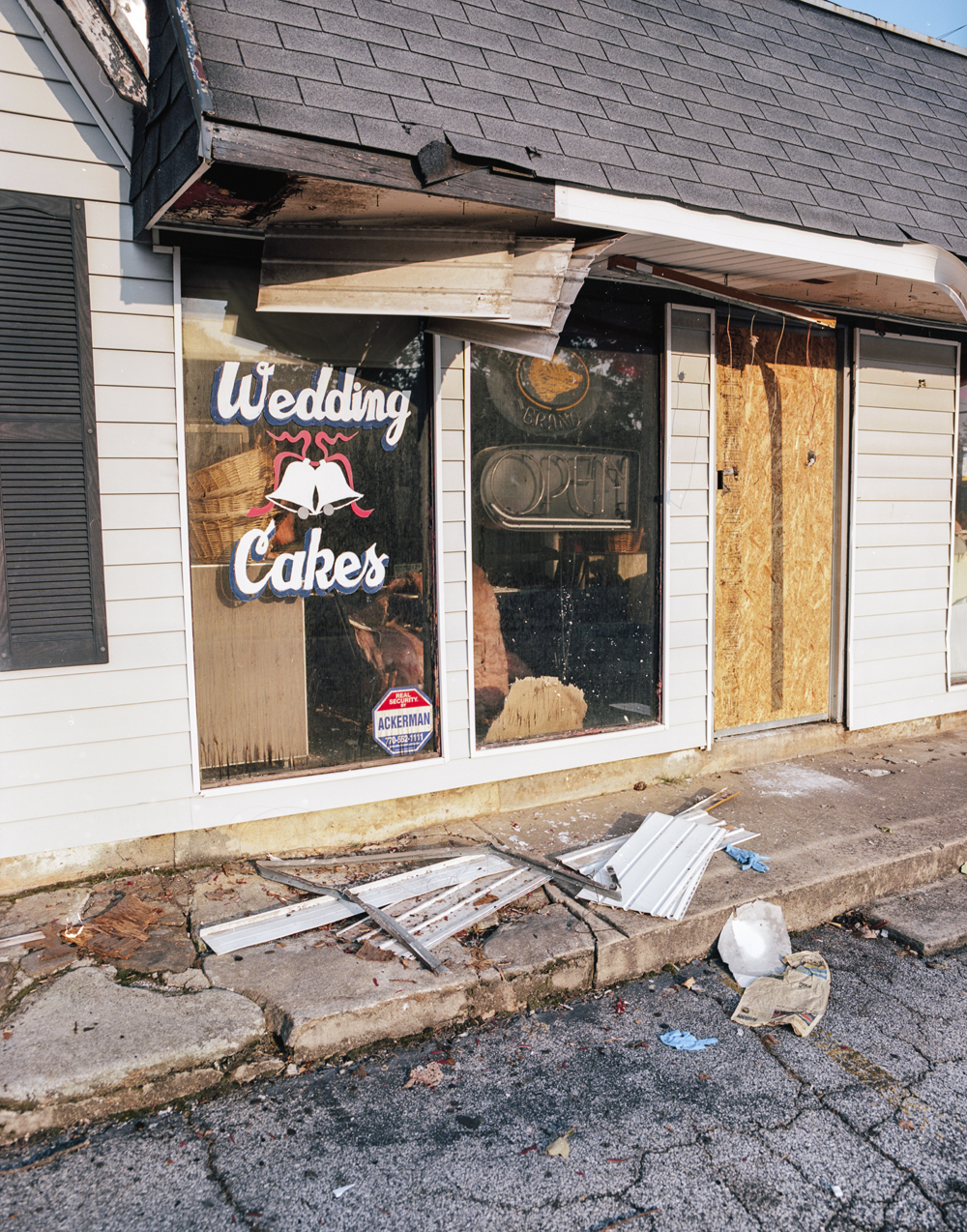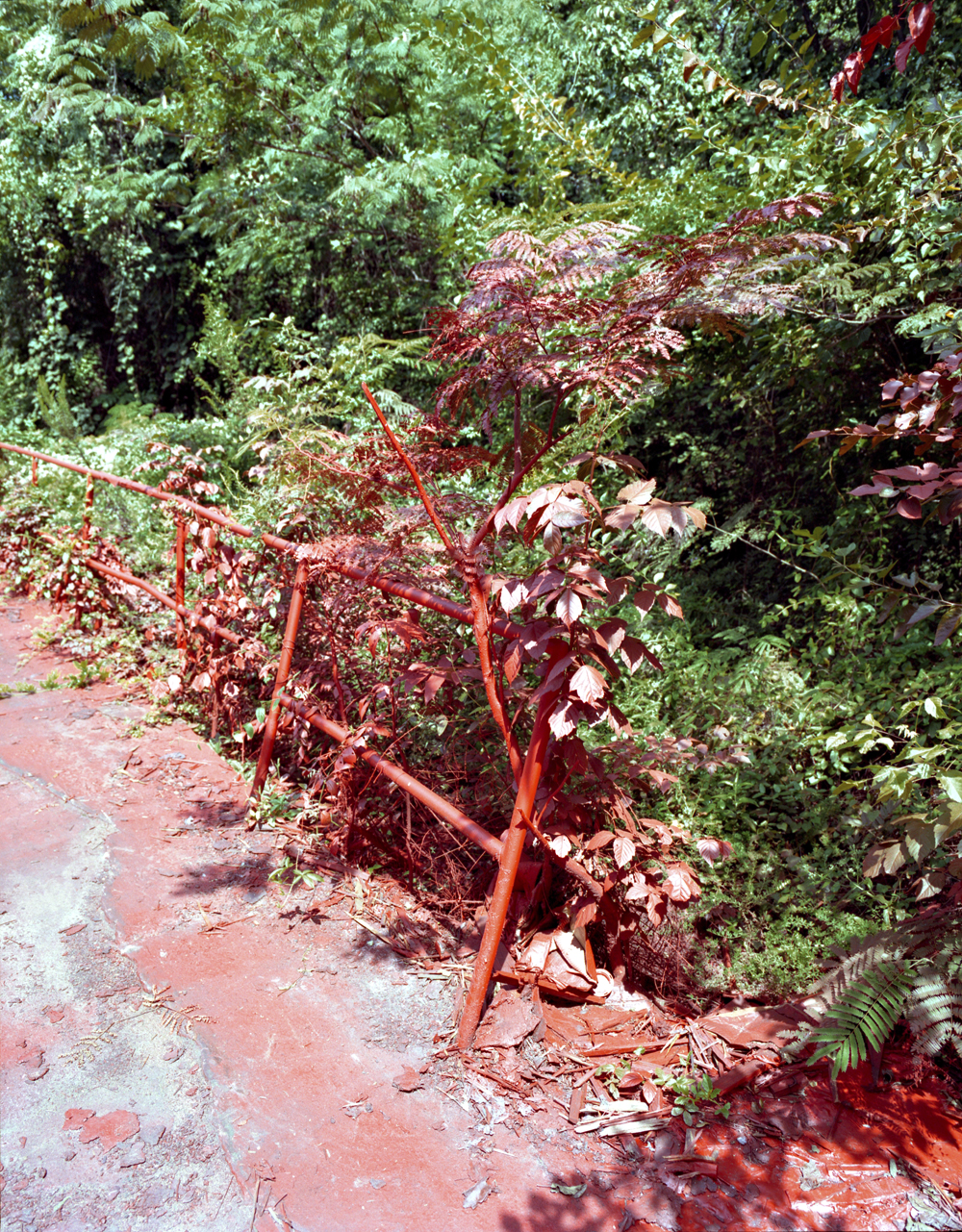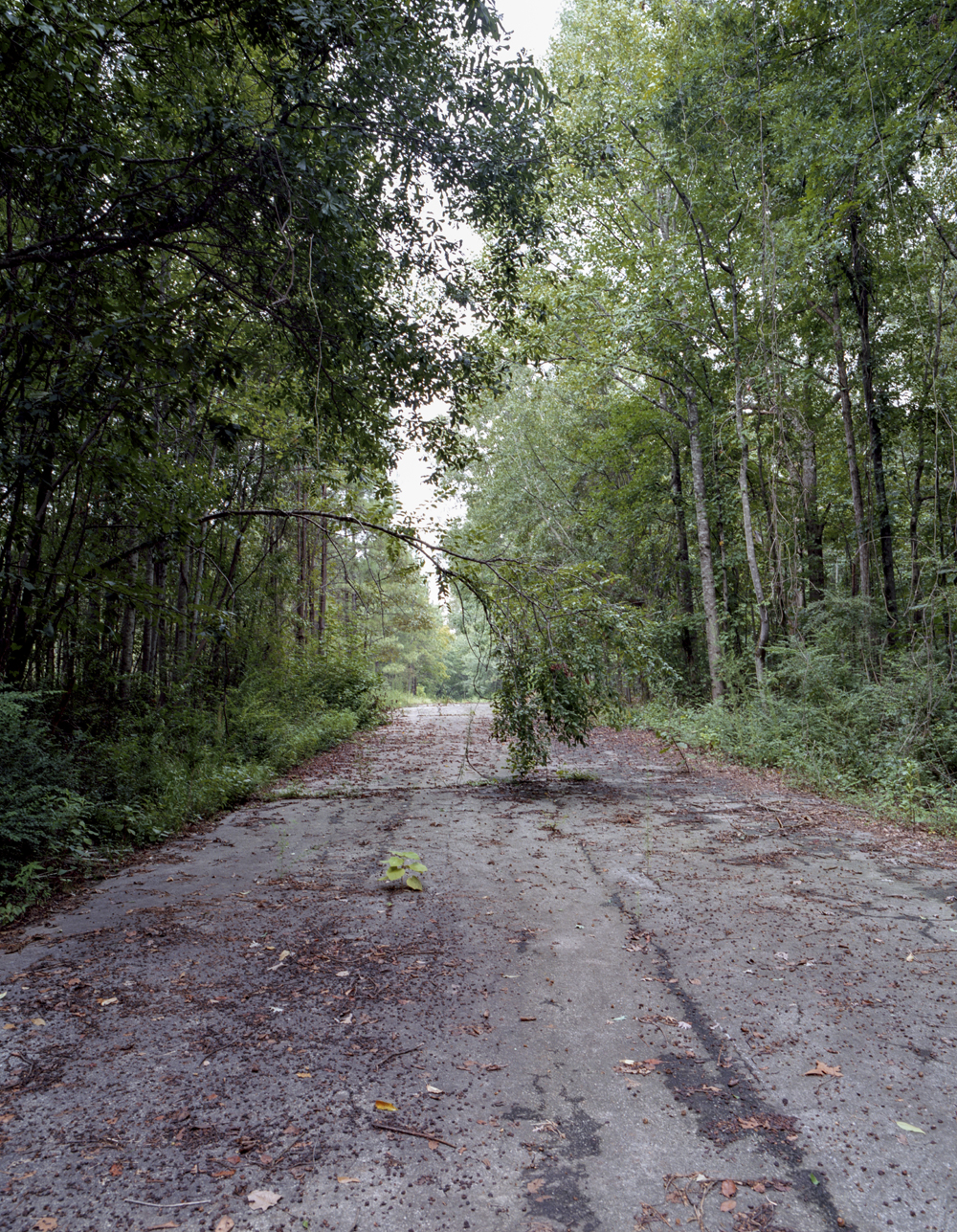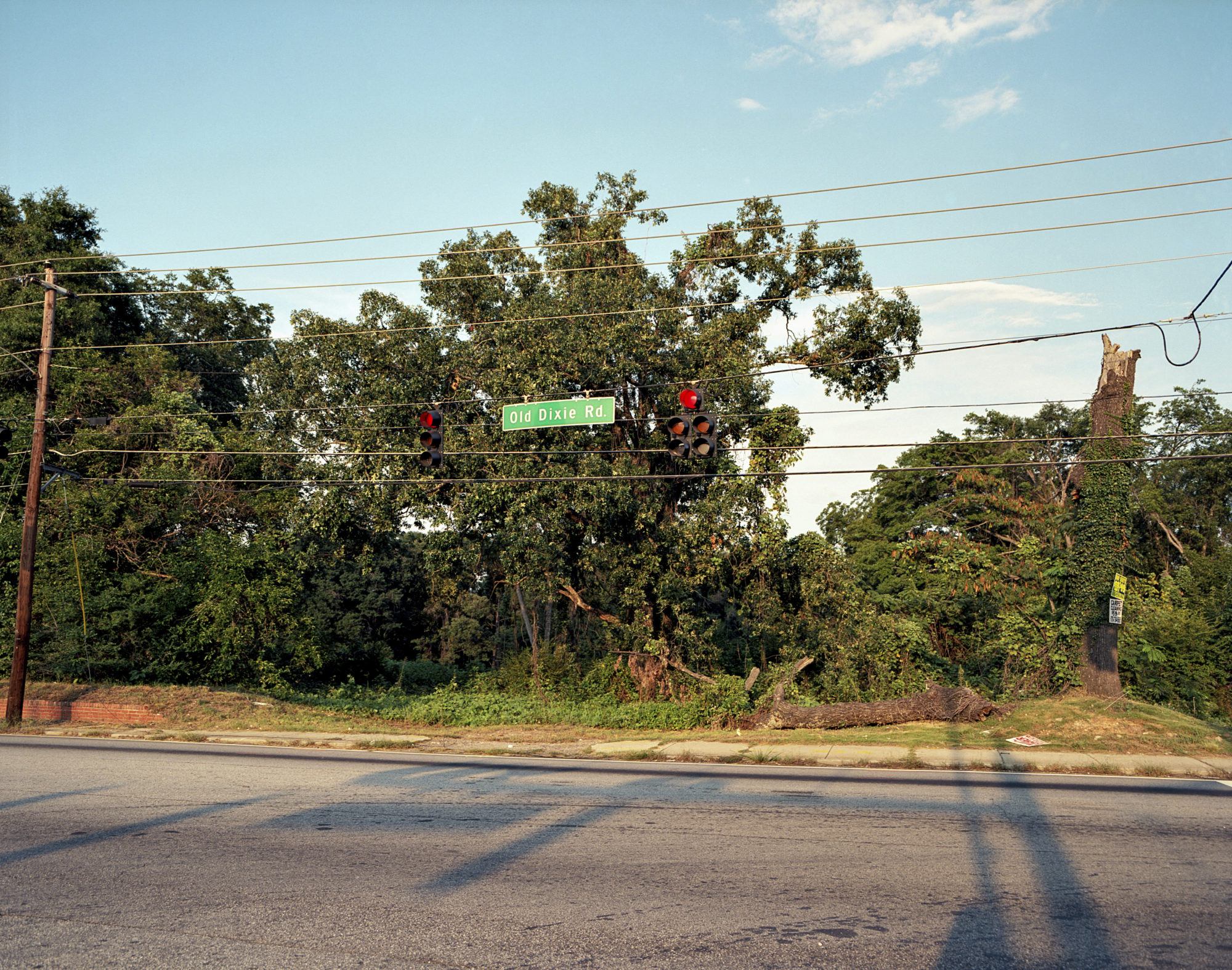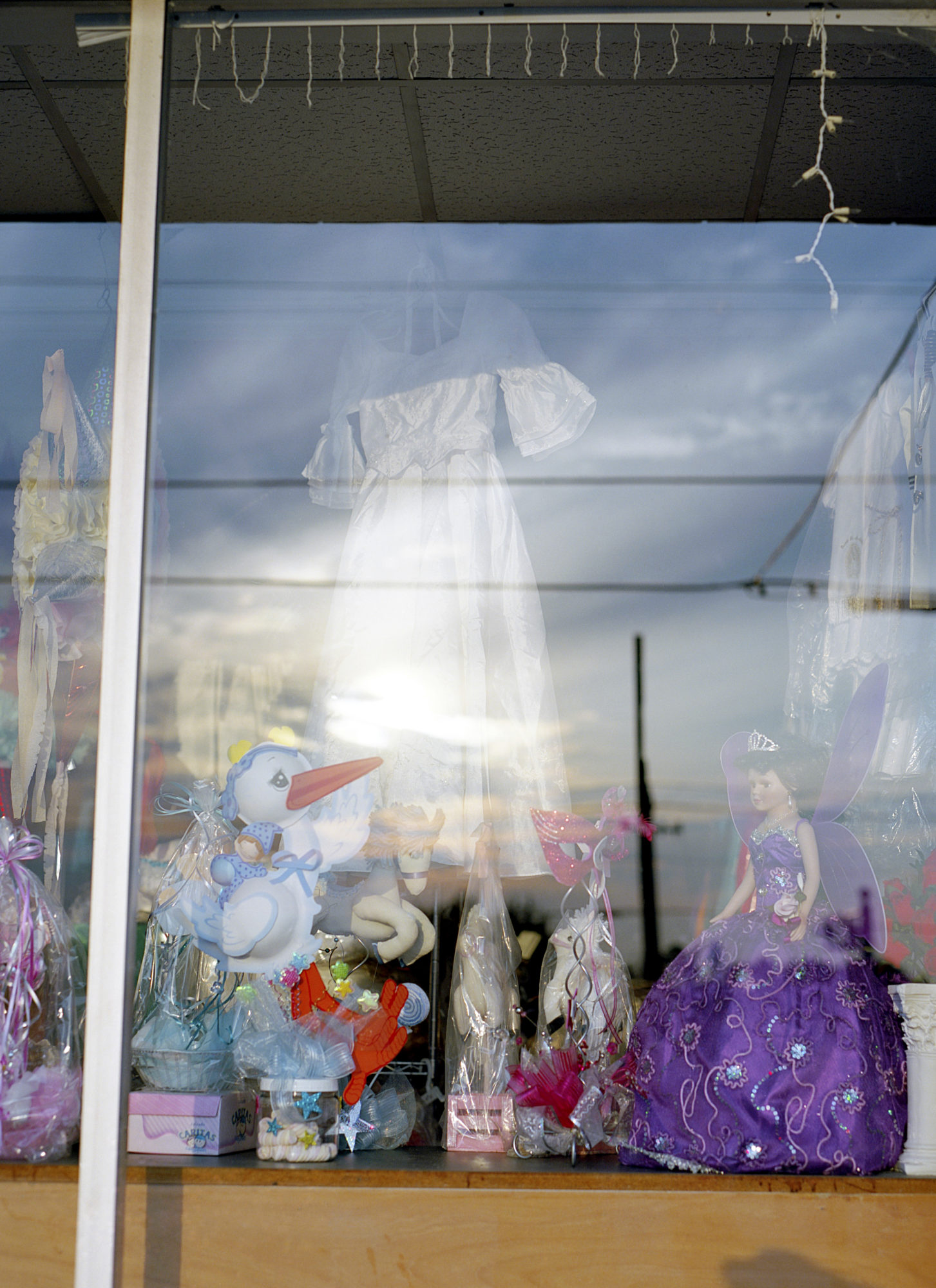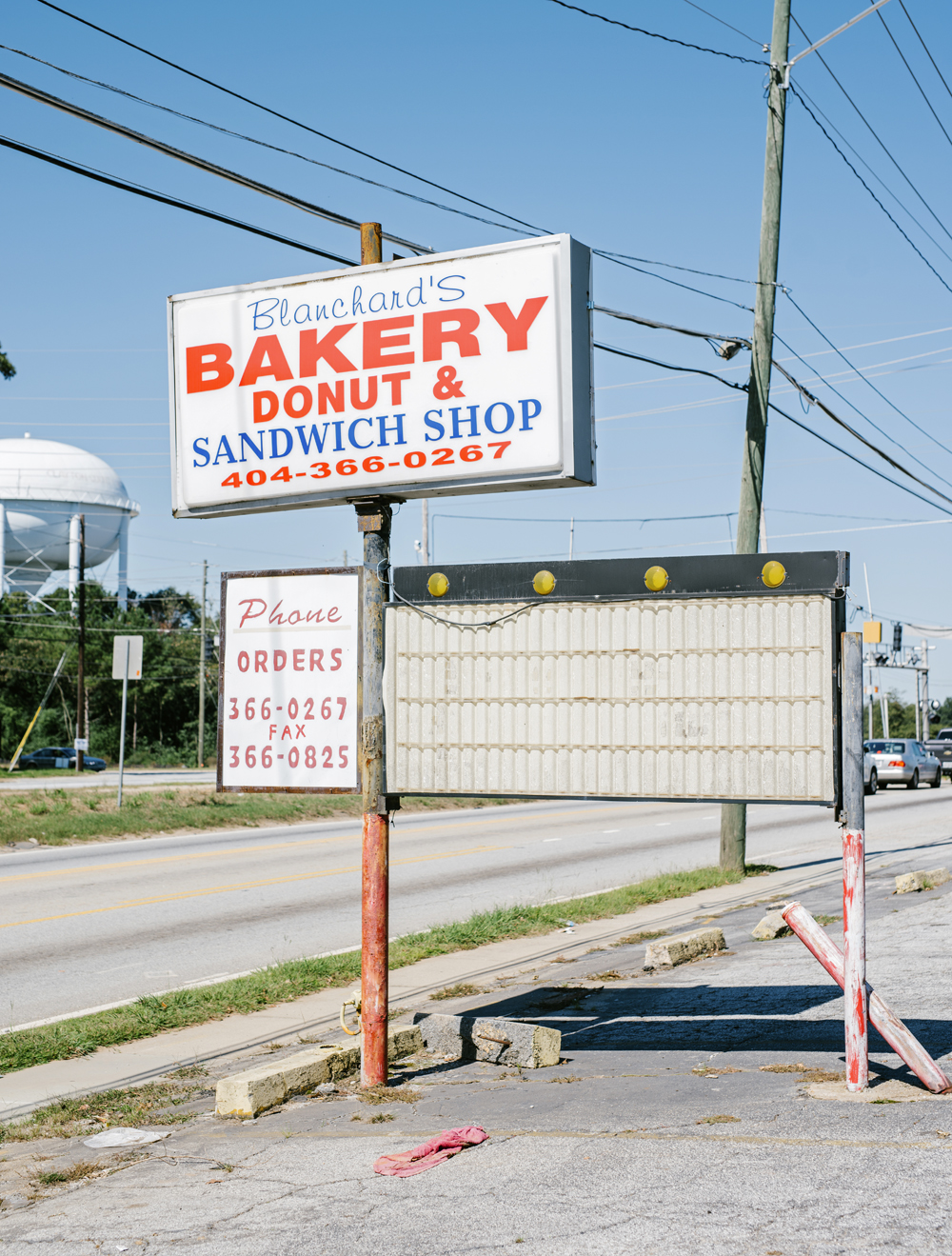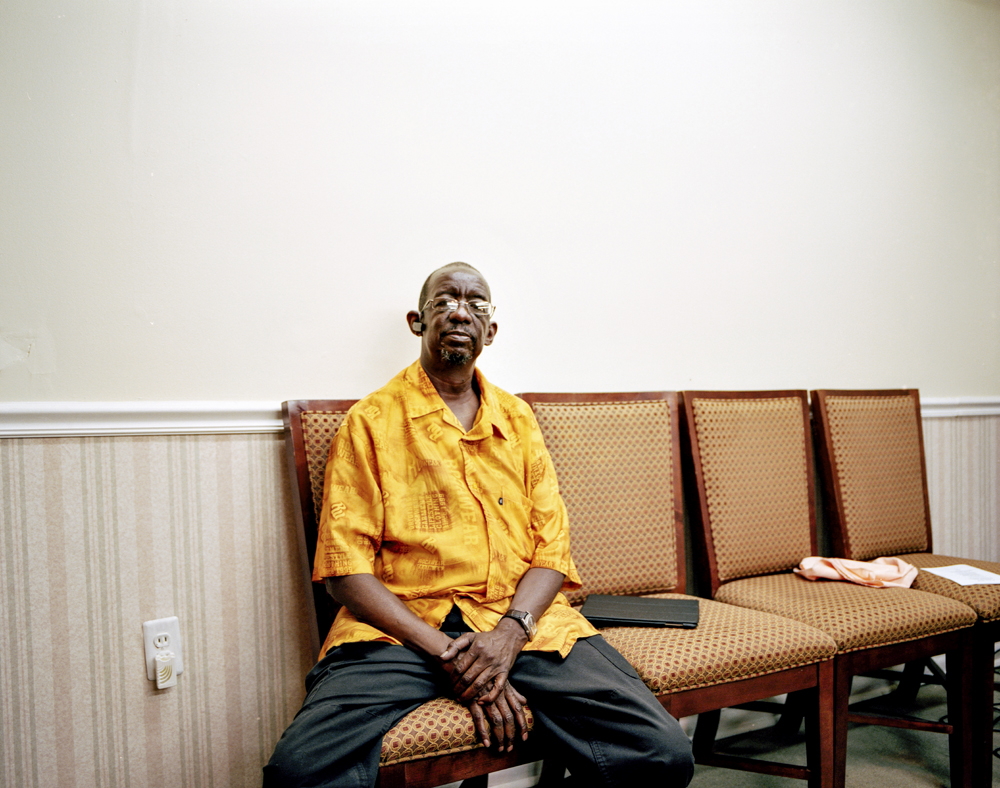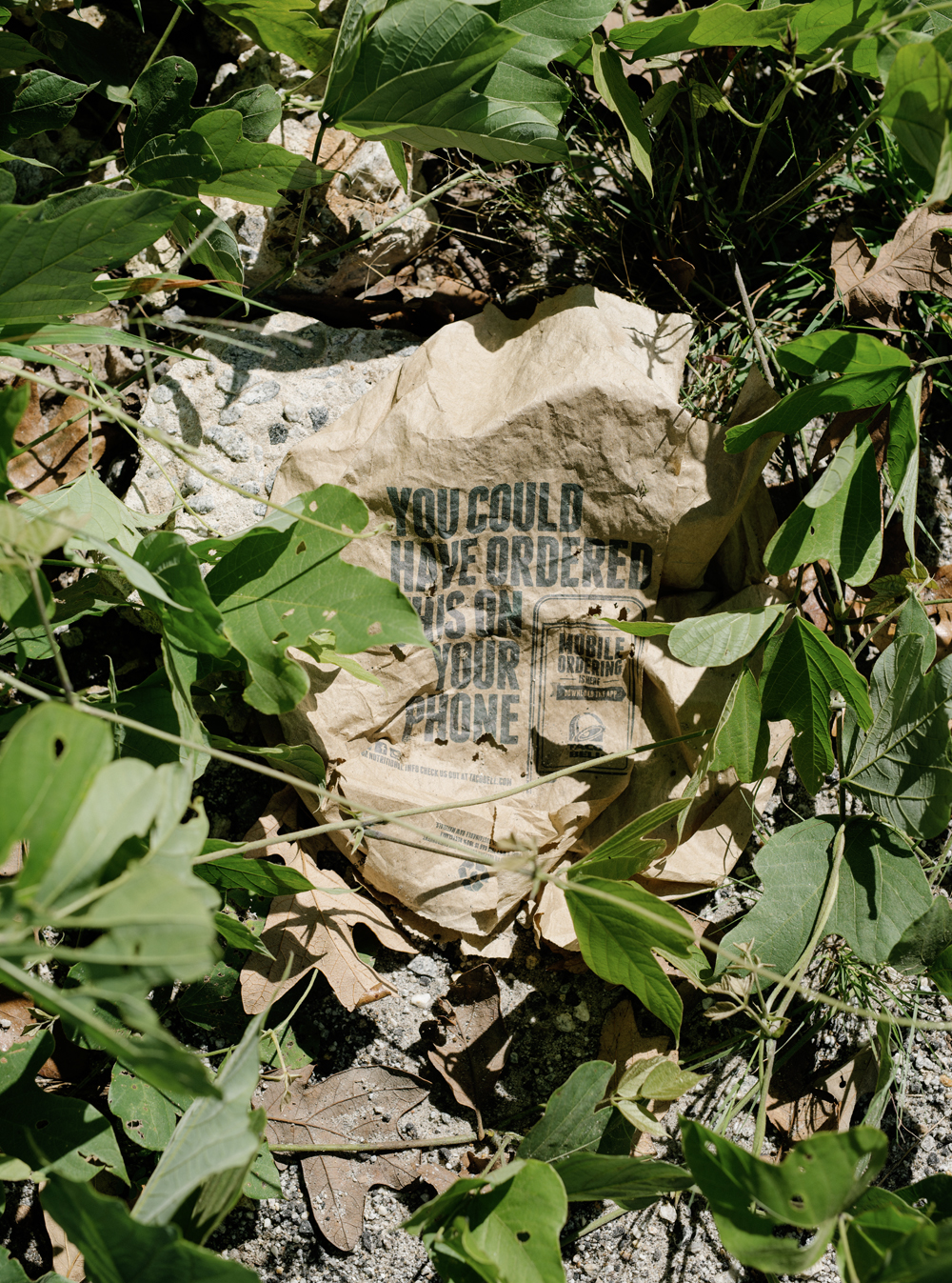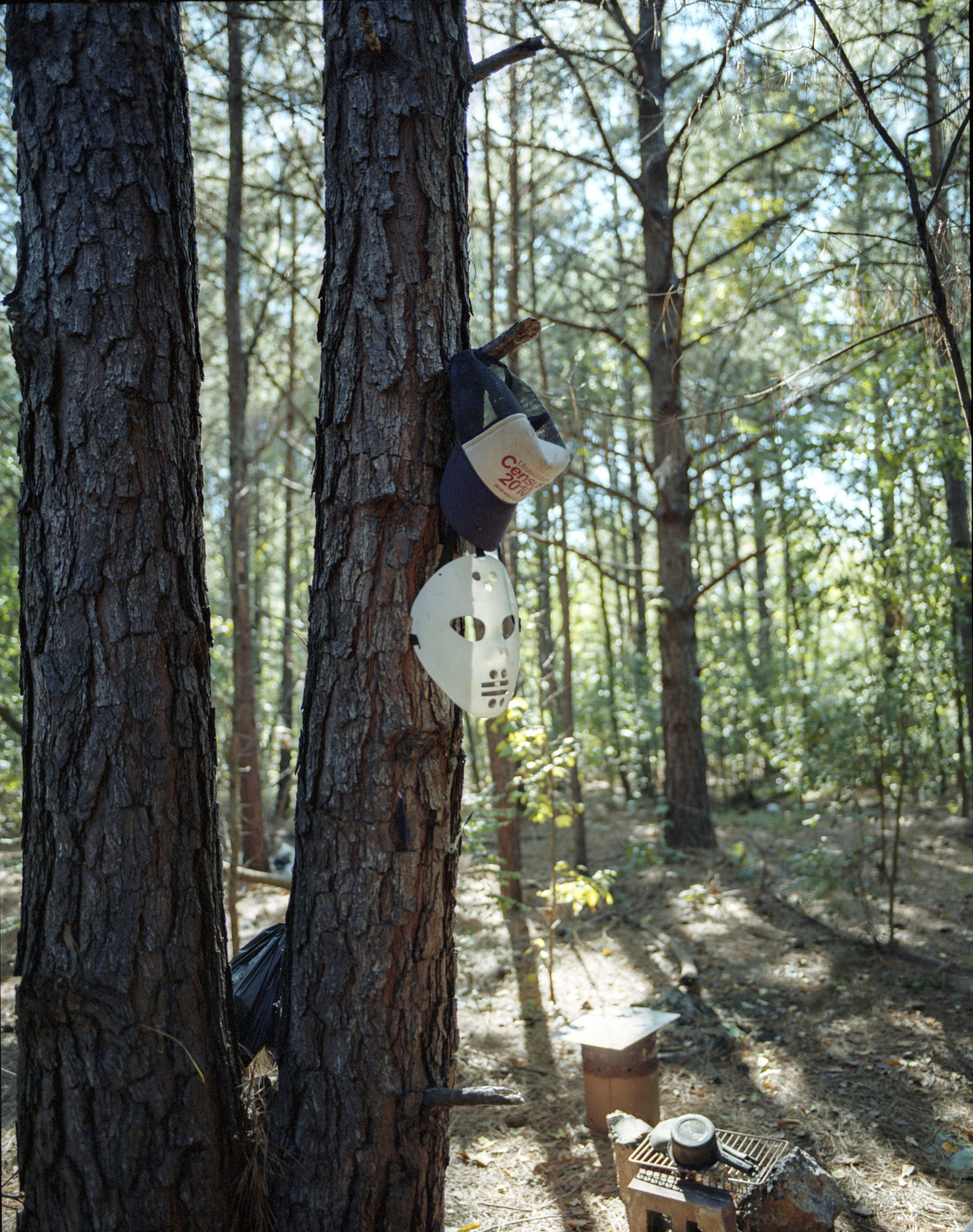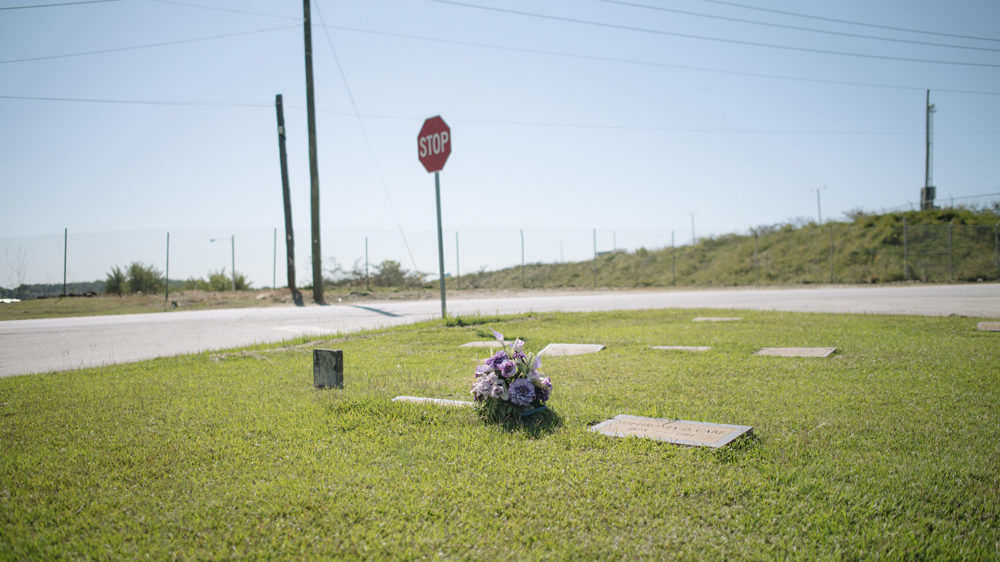
All images: Johnathon Kelso, “Mountain View” series, 2015
Achieving Blankness
Share:
I am disappointed to report that Airport Loop Road is not a loop.
Late one afternoon I sat idling at a red light on Loop Road on the northern edge of Hartsfield-Jackson Atlanta International Airport (ATL). An enormous white airplane was gliding beyond the parking lot to my left, close enough to produce the illusion that I was moving, too. Beyond that, the Q-tip of an air traffic control tower stood brightly against a line of storm clouds. It occurred to me that even though I have lived near the airport for years, I had never tried driving “the loop.” I punched the trip odometer on my dashboard.
It started to rain. As I picked up speed, the tree-lined boulevard turned into a freeway bridge with concrete walls that blocked any view except for that of the blackening sky. Approximately one mile into my experiment, I was faced with a series of ramps leading in every direction. On all sides, shuttle buses and limousines were decisive, racing toward their destinations. I escaped to the interstate highway, which carried me away from the storm.
In one direction, then, “the loop” disintegrates into that tangle of entrance ramps leading to the Central Passenger Terminal Complex and its compound of parking decks. In the other direction, it ends abruptly at what is known as the fifth runway. I learned this detail only later, however, after hours of examining satellite maps. While I had not been expecting a perfect, circular petri dish of aviation activity, I had imagined that the airport perimeter would be more or less continuous, like a moat.
What my failed drive around Loop Road revealed was that the airport is too complicated and is growing too fast to maintain such a thing, physically. Like many big airports, Hartsfield-Jackson is in a state of perpetual construction. This flux, coupled with the confusion assured by Loop Road, instead forms a kind of mental boundary, a glaring and seemingly intentional disconnect between the world’s busiest airport and the rest of the world that surrounds it.
The facility’s sheer scale contributes to its mystery. There is no vantage point from which you can appreciate its spectacular 4,700 acres. There is no iconic portal, no observation deck—nothing that might contribute to a sense of place there. Its design includes nothing peripheral to the goal of efficiency. In fact, it is wholly possible that the airport’s success is dependent on achieving precisely that kind of anonymity or blankness. Its singular objective is to provide a clear airfield for moving planes in and out, defining a presence so forgettable that it dodges even the critical eye. Everyone uses the airport. No one sees it.
Still, I try to do both. Growing up below the flight path, I would hear rumors about homes “taken” by the airport, whole neighborhoods buried under the tarmac. Now I live a few miles away and watch with unease as it continues to expand, wondering if anything can survive its relentless and quiet encroachment.
I decide to ride a bike along Loop Road as far as possible, to look for remnants of the past and signs of present life there.
The bike ride is a stunt, a stylization. I already know that the airport’s periphery is a hostile place for pedestrians, from years of watching confused-looking visitors emerge from their hotels near Loop Road—clusters of khaki-clad businessmen dragging their suitcases across the wide parking lot of a Ruby Tuesday; families in flip-flops stranded on a sunbleached median, waiting to cross six lanes of traffic. I also know it won’t be much better by bike.
I wait for a cool summer morning and wear my brightest yellow T-shirt. The sky is piercing blue, as if scrubbed clean by storms the night before. I start by going east on Virginia Avenue, near the northern perimeter of the airport. Today it’s a scruffy strip of chain hotels, motels, and restaurants, but for decades, Virginia was the airport’s main gateway. I bump self-consciously from the sidewalk onto the road, then back again, to avoid traffic.
Just under the suicide barrier that lines a bridge over the highway, there are two crumbling and unmarked strips of concrete. They wouldn’t be noticeable to a driver, but my parents pointed them out to me once and explained that they were the only remains of the ramps that used to lead to the “old airport”: Atlanta Municipal Airport, opened in 1930; its 1961 terminal building was a turquoise-and-white showpiece with a scalloped roofline, its entrance approached by a formal promenade. These truncated access ramps somehow survived a demolition—stray remnants that lead to what is now the parking lot of a Renaissance Hotel. The concrete ghost map of the framework of the old airport is there, if you know where to look.
The faceless clutter of our airport today contrasts sharply with the bright modernity that defined the midcentury wedding cake terminal. Since the Central Passenger Terminal Complex (CTPC) replaced it in 1980, the airport has systematically acquired an impenetrable shell of signage, awnings, and covered walkways, making any architecture unobservable from the ground. On opening day, however, the terminal would have been a clean icon of beige ambition: not quite assertive enough to be truly brutalist, its concrete peaks nevertheless followed a peculiar kind of late-1970s Darth Vader chic.
Referring to the 1980 terminal’s lack of color, The New York Times architecture critic Paul Goldberger wrote, “It is hard not to get over the sense that one is caught in a huge machine, something like a great Xerox machine.” What Goldberger intended as snark might have sounded like high praise to Atlanta’s planners and engineers. They weren’t trying to design a Penn Station, to pay homage to the grandeur of the past. Behind their practical goal of efficiency was perhaps one of something more radical: erasure.
Before the old airport there was Candler Field, which opened in the 1920s and later boasted not only a busy airfield but also a restaurant with an Old South theme. Its entrance was decorated with cotton bales and attended by an elderly black host, who entertained diners with Uncle Remus tales. Such historical contexts are successfully blotted out by subsequent terminals: the design for the 1980s airport, an ahistorical style made possible by intentional blankness, represents an attempt at defining a new American South in its “capital” city, through a process of occlusion.
My bike ride takes me through Delta Airlines’ corporate campus: a series of mid-rise bunkers with a common red brick and beige motif. Delta’s triangular logo is incorporated into the tall iron fences in some places, though unmarked barbed wire suffices in others. As I pass under an enclosed pedestrian bridge crossing Loop Road, I spot a banner declaring Delta “an air force 80,000 strong.”
Despite being in the heart of a company headquarters, I don’t see a single Delta employee. Rows of cars sparkle in the parking lots, but where is everyone? I stop to peer through a chain-link fence bearing one of many signs forbidding trespassing, and apparently protecting a drainage ditch overrun with kudzu. I note only two signs of life beyond it: a colorful knot of visitors unclogging a shuttle bus at the entrance of the Delta Flight Museum, and a cloud of smoke floating over from Virginia Avenue, which means Pit Boss BBQ is open for lunch.
Pedaling along the North Cargo complex, now level with the runways, it feels like I am close enough to be considered trespassing. White planes with dark fins roll seemingly silently along a distant taxiway. Curious little vehicles swarm in the dust clouds left by landing aircraft. Despite all this activity, I haven’t seen a single human face on Loop Road.
After I pass the last tree of the landscaped boulevard, the scene opens up and the airfield spreads out before me. The sky never looks this big in Atlanta. The grass strips between the runways are bright as Astroturf. I wish for an observation deck, a perch unobstructed by fences and warning signs.
As the road snakes around the airport’s eastern edge, it gently drops according to the land’s natural grade. Soon, I am looking up at the runways and feeling tiny as I calculate the difference in height between the original landscape and the constructed hillsides. From this low position at the end of a runway, the airplanes taking off look more like rockets: the line of ascent is vertical; the sound is crushing. But it’s not just the decibel level. It’s like that menacing energy before a storm, when the wind whips up the treetops and the streetlights flicker, and it’s too loud to talk or think.
The noisiest areas around an airport are not good for much and are mostly occupied by warehouses and parking lots. But the areas at the immediate ends of the runways truly are reminiscent of a no-man’s land. The Federal Aviation Administration mandates “runway protection zones,” which are defined as trapezoidal clear zones at the end of every runway in case of a crash landing.
In Atlanta, on both ends of the airport’s five parallel runways, noise-impacted neighborhoods were bought and relocated to create this clear zone. On the east side of the airport was my hometown, Mountain View, a small city of thick old houses and oak trees, one elementary school, and one First Baptist Church. I was too little at the time to remember much about it, but I know our house was one of hundreds bought by the airport, hoisted onto a truck, and rolled away. Most folks took their relocation assistance money and moved south. Others protested, including Ray King, the mayor of Mountain View. In a bizarre moment in Georgia history, the state legislature stepped in to revoke the city of Mountain View’s charter.
Mountain View was erased from the map, but until very recently, a cluster of nondescript brick holdouts remained, sandwiched between the runways and Ford’s Atlanta Assembly Plant, which was demolished in 2009. I look for them as I cruise by, but all that’s left is a thin unmarked street trailing off in a stand of pines.
As I continue south on Loop Road, the speed and size of passing trucks becomes worrisome. The shoulder tightens to a narrow strip, and then the strip is gone. Whatever Loop Road used to be, it ends here at Atlanta’s larger loop: I-285, our perimeter highway. The fifth runway spills over 10 lanes of traffic here; its construction required builders to move mountains of dirt, two creeks, and 900 acres of businesses, churches, and homes. At a cost of $1.3 billion, this feat of engineering locked in ATL’s rank as the “world’s busiest” airport.
I pedal faster, taking up a whole lane and half-praying, please, please, please don’t hit me. I wind through the airport’s technical campus to Sullivan Road, a quiet, two-lane road named for Sullivan Creek, which was rerouted underground during construction of the fifth runway, and probably named for some long-gone settler. I note that the reference to the hidden creek is another remnant of a past not quite wiped clean.
As I pass a sign that says “PEDESTRIANS AND NON-MOTORIZED VEHICLES PROHIBITED,” I spot a van with security lights on top parked on the side of the road. This is the end, I think, sweating. This is where I get caught. I don’t stop pedaling until I reach a small graveyard at the top of the hill.
I get off my bike and I am at Flat Rock Cemetery, miraculously preserved inside the grounds of the airport. A sign tells me what the worn headstones cannot (most are streaked and illegible, tilted and toppled by a hundred years of exposure): “This cemetery, its oldest grave dating to 1877, contains the remains of many of the earliest settlers of the surrounding Flat Rock community.”
If anyone was in that van, patrolling the airport perimeter, they have not followed me here. I wander the grounds, stepping carefully between graves. It looks like any rural Georgia cemetery. I see granite obelisks, crosses, and tree trunks. I see names that sound familiar—Dodson, Turner, Liveoak. I see graves of Confederate soldiers, headstones marked simply “Mother,” and the small graves of buried children.
Faded flower arrangements mean that I am not the only one who has ever visited this cemetery, but today it’s just me, under the big sky. I am comforted that the runways, built high on green mounds, form these pockets of stillness. Overhead, the ceaseless breeze and the white drone of cruising aircraft seem to circulate around a quiet, unchanging core.
Johnathon Kelso is an Atlanta-based photographer documenting life in the South. The images featured here are from his Mountain View series. www.johnathonkelso.com
Hannah Palmer is an Atlanta-based writer and designer interested in Southern stories and urban landscapes. Her first book, Flight Path, will be published by Hub City Press in April 2017.
